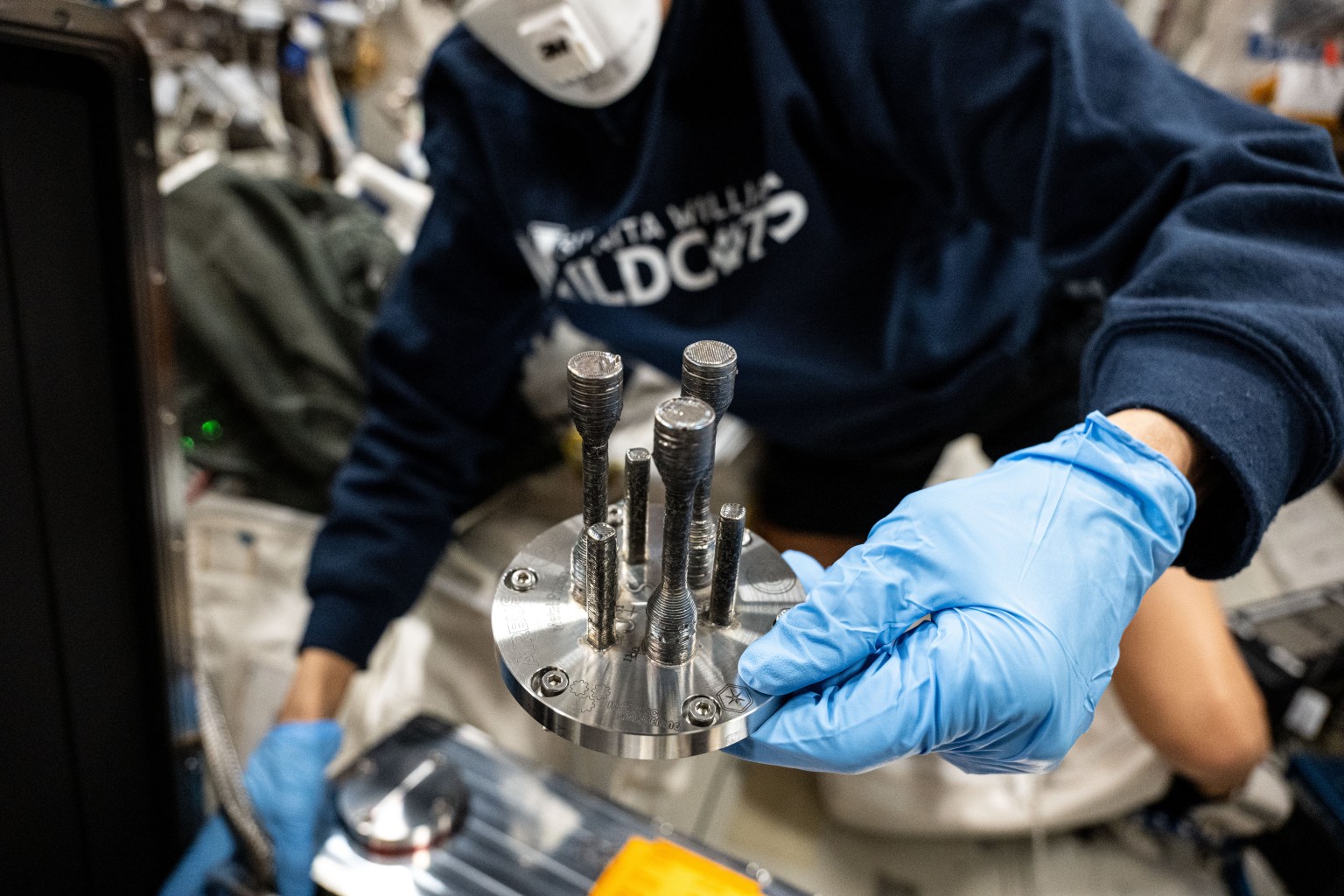4 Min Read 3D Printing: Saving Weight and Space at Launch The first metal part 3D printed in space. Credits: ESA Science in Space March 2025 Additive manufacturing, also known as 3D printing, is regularly used on the ground to quickly produce a variety of devices. Adapting this process for space could let crew members create tools and parts for maintenance and repair of equipment on the spot, rather than trying to bring along every item that might be needed. The ability to manufacture things in space is especially important…
Read MoreTag: Benefits Back on Earth
Tissue Chips Accurately Model Organs in Space
NASA astronaut Jessica Meir conducts cardiac research using tissue chip platforms in the Life Sciences Glovebox aboard space station in March of 2022. NASA The International Space Station offers a unique microgravity environment where cells outside the human body behave similarly to how they do inside the human body. Tissue chips are small devices containing living cells that mimic complex functions of specific human tissues and organs. Researchers can run experiments using tissue chips aboard space station to understand disease progression and provide faster and safer alternatives for preparing medicine…
Read MoreNASA Data Helps Protect US Embassy Staff from Polluted Air
4 Min Read NASA Data Helps Protect US Embassy Staff from Polluted Air This visualization of aerosols shows dust (purple), smoke (red), and sea salt particles (blue) swirling across Earth’s atmosphere on Aug. 23, 2018, from NASA’s GEOS-FP (Goddard Earth Observing System forward processing) computer model. Credits: NASA’s Earth Observatory United States embassies and consulates, along with American citizens traveling and living abroad, now have a powerful tool to protect against polluted air, thanks to a collaboration between NASA and the U.S. State Department. Since 2020, ZephAir has provided real-time…
Read More

